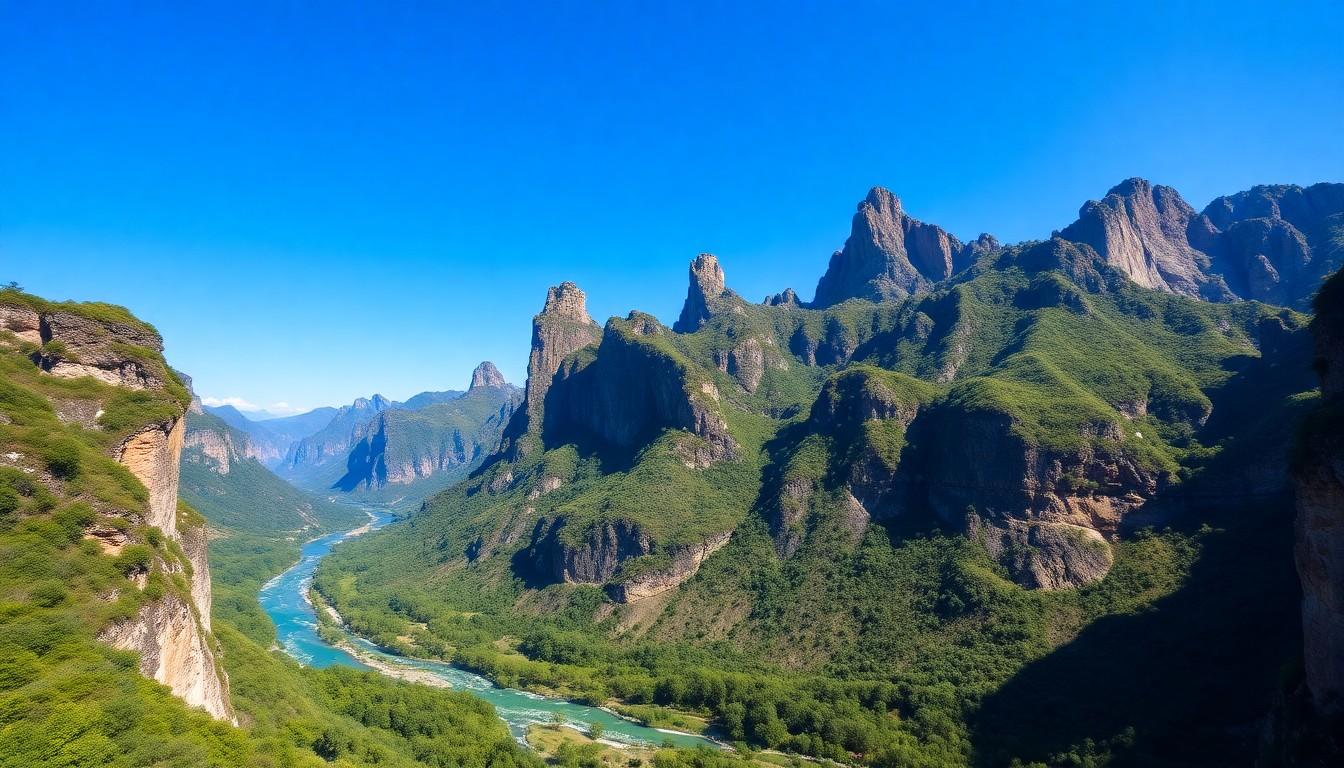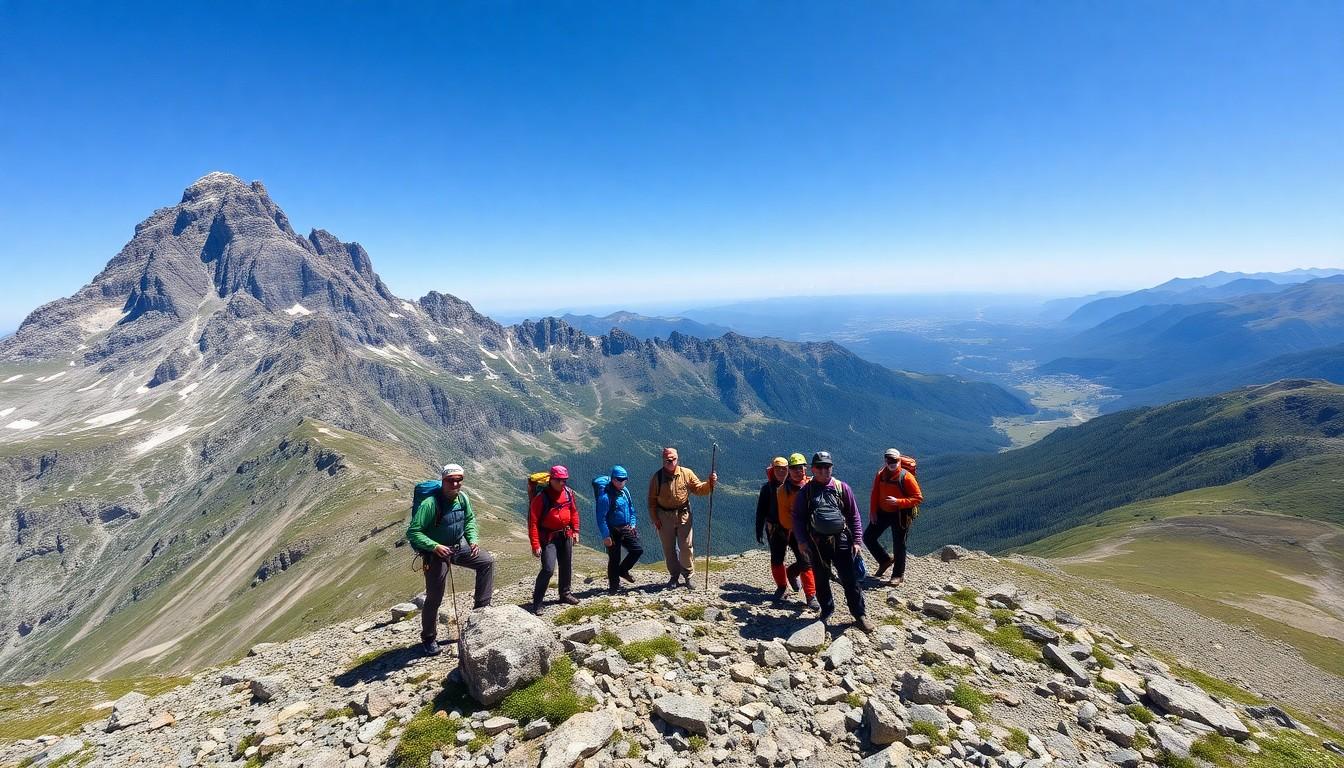Nestled in the heart of breathtaking landscapes, Mountain Kamaneton stands tall, but just how high is it? This majestic giant has intrigued adventurers and nature lovers alike, drawing them to its slopes and stunning vistas. Measuring its height might seem like a simple task, but it’s a question that sparks curiosity and ignites the spirit of exploration.
Overview of Mountain Kamaneton
Mountain Kamaneton stands at an imposing height of 4,200 meters (13,780 feet) above sea level. This significant elevation makes it one of the tallest peaks in its region. Adventurers frequently seek to challenge themselves by attempting to summit this majestic mountain. Diverse ecosystems thrive on its slopes, attracting wildlife and plant enthusiasts alike. Dense forests and alpine meadows contribute to its unique biodiversity.
Climbers appreciate the variety of routes available, ranging from beginner trails to advanced ascents. These distinct paths cater to different skill levels, providing a comprehensive experience for each climber. Popular climbing seasons occur during the dry months between May and September, when conditions are most favorable. Experts emphasize proper preparation, as weather changes can be unpredictable at such altitudes.
Cultural significance also surrounds Mountain Kamaneton. Local communities regard it as a sacred site, often featured in folklore and traditions. Tourists visiting contribute to the region’s economy, enticing local guides and artisans. Exploring Kamaneton allows for a deeper understanding of the mountain’s historical and cultural context.
Interesting geological formations characterize the peak and surrounding areas. Various rock types reveal the mountain’s ancient origins, captivating geologists and nature lovers. Ongoing research continues to uncover the secrets hidden within this impressive landscape. Each expedition offers new insights into the mountain’s ever-evolving story.
Geographic Location

Mountain Kamaneton sits prominently in the region, surrounded by breathtaking natural features. The mountain’s location offers stunning views and unique ecosystems, making it a prominent fixture for adventurers.
Neighboring Landmarks
Several notable landmarks surround Mountain Kamaneton. Nearby, the majestic Peak Anakar is often cited for its striking limestone cliffs. The verdant Kamaneton Valley provides a rich habitat for diverse wildlife. Local rivers, such as the Green River, flow through the landscape, enhancing the area’s beauty. Visitors often explore these attractions, expanding their understanding of the region’s natural history. Cultural sites, including ancient petroglyphs, also await discovery, deepening connections to local heritage.
Accessibility
Access to Mountain Kamaneton varies depending on the route. Several trails lead to the base, with options catering to different skill levels. The main trail, starting at the village of Kamanah, features well-maintained paths. It’s approximately a three-hour hike to reach the base camp. Transportation options abound, including buses and guided tours from nearby cities. Once on the mountain, climbers can find various campsites, ensuring comfort during extended stays. Seasonal weather patterns may impact accessibility, particularly during rainfall.
Height Measurement
Mountain Kamaneton’s height has intrigued researchers and climbers alike. Accurate measurement methods vary.
Methods of Measurement
Triangulation techniques often serve as a primary method, utilizing survey points to calculate height. GPS technology provides direct measurements by employing satellites, ensuring high precision. Additionally, barometric pressure readings from specific elevations offer insight into altitude changes, enabling further verification of height. These techniques collectively help substantiate Kamaneton’s stature of 4,200 meters (13,780 feet) above sea level.
Historical Records
Historical accounts contribute to Kamaneton’s height understanding. Local climbers began documenting measurements over a century ago, often relying on rudimentary tools. Reports from explorers in the early 1900s noted varying figures. These initial estimates laid foundations for later accurate measurements. By cross-referencing ancient texts with modern data, researchers unraveled height discrepancies, enhancing overall comprehension of this remarkable mountain.
Significance of Mountain Kamaneton
Mountain Kamaneton holds considerable significance due to its cultural and environmental attributes. Both aspects enhance its allure for visitors and enrich the experience of exploring the area.
Cultural Impact
Cultural impact resonates deeply within local communities, where Mountain Kamaneton is esteemed as a sacred site. Many local legends and folklore emphasize its spiritual importance. Worship practices and rituals center around the mountain, reinforcing its role in regional identity. Artifacts, such as ancient petroglyphs, reveal a rich heritage that connects past generations with contemporary visitors. Additionally, tourism driven by its cultural significance contributes to the local economy, offering essential support for traditional lifestyles while fostering an appreciation for the region’s history.
Environmental Aspects
Environmental aspects of Mountain Kamaneton reflect its diverse ecosystems and rich biodiversity. Various habitats, from dense forests to alpine meadows, support numerous plant and animal species. Unique flora and fauna thrive in its distinct ecological zones, attracting nature enthusiasts and researchers alike. Waterways such as nearby rivers enhance the visual beauty and ecological balance of the area. Research continues to uncover the mountain’s role within its ecosystem, highlighting its importance in conservation efforts. Seasonal weather patterns also shape these environments, presenting challenges and opportunities for both climbers and wildlife.
Conclusion
Mountain Kamaneton stands as a testament to nature’s grandeur and complexity. Its impressive height and diverse ecosystems create an enchanting backdrop for adventurers and researchers alike. The mountain’s cultural significance adds depth to its allure, inviting visitors to connect with both the landscape and local heritage.
With various climbing routes available and a wealth of natural beauty surrounding it, Mountain Kamaneton continues to inspire exploration and curiosity. As climbers and nature enthusiasts venture into its majestic terrain, they not only challenge themselves but also contribute to the ongoing appreciation and preservation of this remarkable site.


